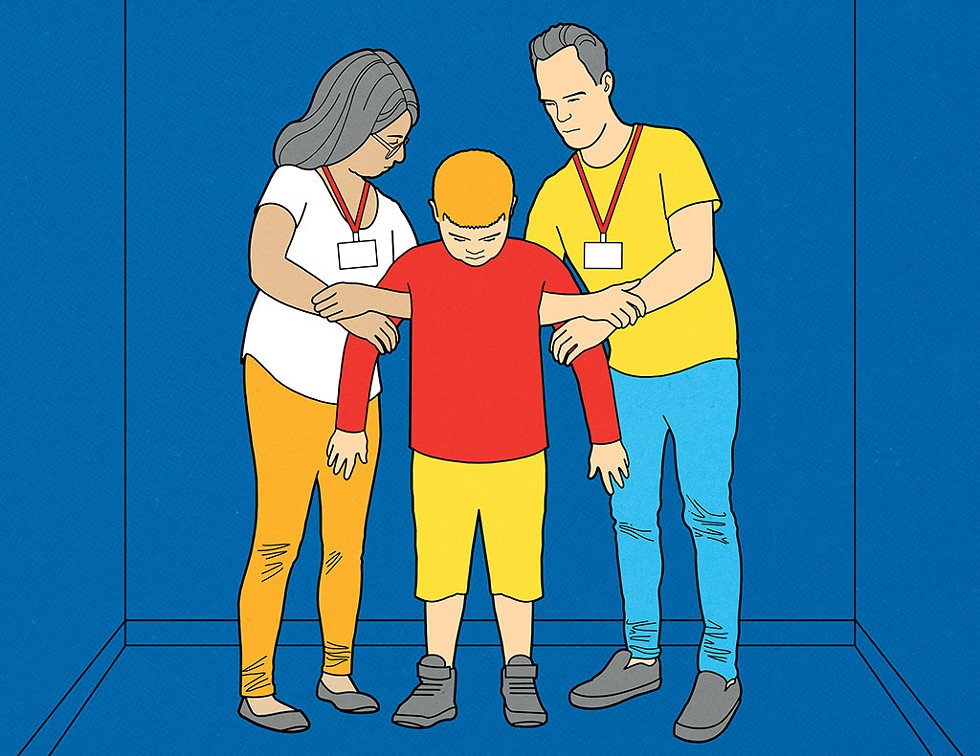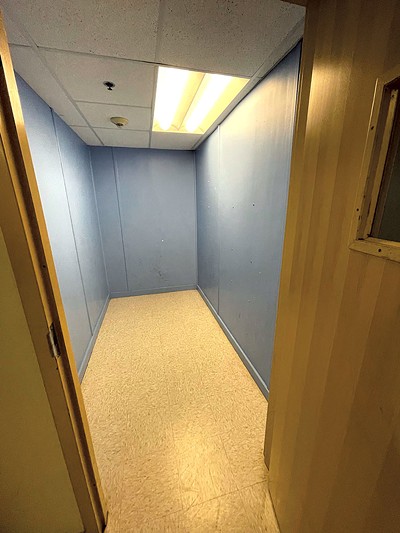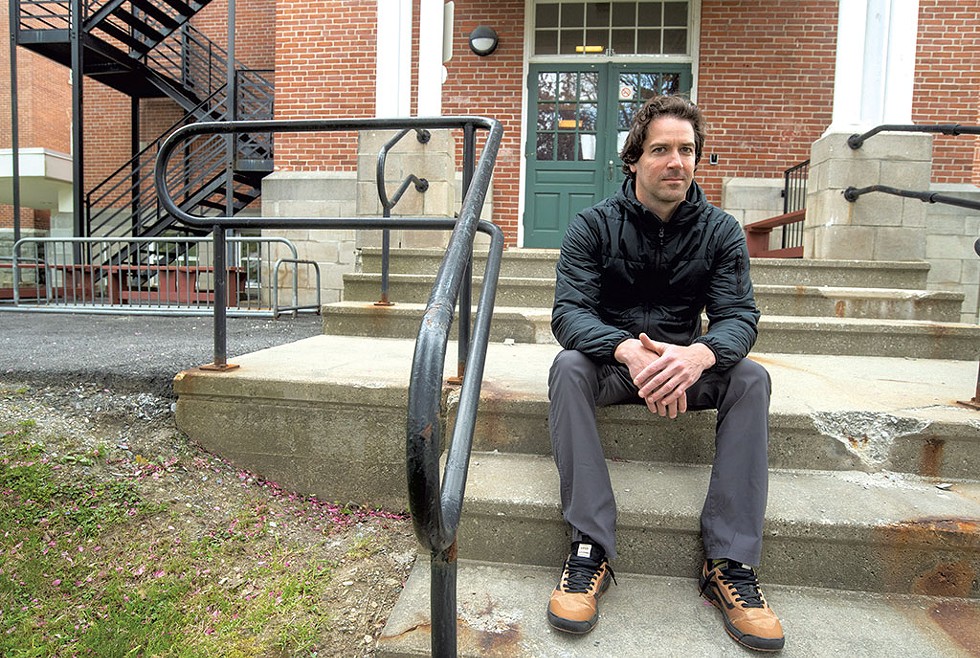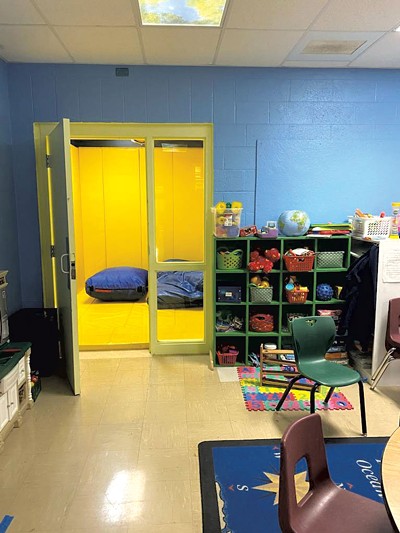Switch to the mobile version of this page.
Vermont's Independent Voice
- News
- Arts+Culture
- Home+Design
- Food
- Cannabis
- Music
- On Screen
- Events
- Jobs
- Obituaries
- Classifieds
- Personals
Browse News
Departments
-
Education

Scott Official Pushes Back on Former State…
-
News

Burlington Budget Deficit Balloons to $13.1 Million
-
Education

Senate Committee Votes 3-2 to Recommend Saunders…
- Court Rejects Roxbury's Request to Block School Budget Vote Education 0
- Norwich University Names New President Education 0
- Media Note: Mitch Wertlieb Named Host of 'Vermont This Week' Health Care 0
Browse Arts + Culture
View All
local resources
Browse Food + Drink
View All
Browse Cannabis
View All
-
Culture

'Cannasations' Podcaster Kris Brown Aims to 'Humanize'…
-
True 802

A Burlington Cannabis Shop Plans to Host…
-
Business

Judge Tosses Burlington Cannabiz Owner's Lawsuit
-
Health + Fitness

Vermont's Cannabis Nurse Hotline Answers Health Questions…
-
Business

Waterbury Couple Buy Rare Vermont Cannabis License
Browse Music
View All
Browse On Screen
Browse Events
Browse Classifieds
Browse Personals
-

If you're looking for "I Spys," dating or LTRs, this is your scene.
View Profiles
Special Reports
Pubs+More
Physical Education: Some Vermont Students Are Restrained or Secluded in School, With Detrimental Effects. Should the Practices Be Eliminated?
Published May 24, 2023 at 10:00 a.m. | Updated May 31, 2023 at 10:06 a.m.
A behavior analyst hired by the school recommended using the room as a way for the boy to "calm down and de-escalate" every 30 to 45 minutes to help address "ongoing challenging behavior," which she said included ripping up classroom materials, putting objects in his mouth, and climbing and crawling under furniture.
But the child's paternal grandparents, who are his legal guardians, didn't know the "crash pad" existed at Westminster Center School. When his grandmother laid eyes on the room last month, they decided to withdraw the boy, who qualifies for special education and had endured a traumatic early life that included multiple foster care placements.
In the past, the grandparents, Jill and Chris, remembered their grandson being allowed to decompress in a different room, one outfitted with stimulating objects and fidget toys meant to calm anxiety and relieve stress. The behavior analyst explained that their grandson liked to be in the "crash pad," but their question was more basic: Why was the boy, barely 8, being repeatedly brought to this cell-like space in the first place? (Seven Days agreed not to publish the couple's last names in order to protect the privacy of the child.)
Jill and Chris, who took custody of their grandson more than two years ago, consulted with a special-education advocate and even called Vermont Legal Aid to discuss how they could ensure that the boy wouldn't be isolated in what they called "the rubber room" for exhibiting problematic behavior.
"Nobody really had a good answer," Chris said. So, they filled out homeschooling paperwork required by the Agency of Education and yanked him from school. So far, the couple said, their grandson seems happier and more relaxed than when he was going to school. A separate parent at the school told Seven Days that her son, who also qualifies for special education, had been taken to the "crash pad" when he was acting out. According to Andy Haas — superintendent of Windham Northeast Supervisory Union, of which Westminster Center School is a part — the school has a "sensory room" that contains a "sensory pillow" and a glass window for some students with specialized learning plans to take breaks. These breaks are monitored by an adult, in accordance with state rules, Haas said.
Students with behavioral challenges are facing similar treatment around Vermont: being confined to small, institutional rooms to calm down, or being immobilized when they act out — sometimes without the knowledge of parents and caregivers.
The far-flung cases reflect the statewide reach of long-standing practices known as seclusion — placing a student in a space from which they are prevented from leaving, or believe they are not free to leave — and physical restraint. An assortment of staff members in every public and therapeutic school — from special educators and paraprofessionals to administrators — is trained in the use of these physical interventions through one of six programs recommended by the state.
Outside of the educational setting, the use of forcible restraint has been in the national spotlight in recent years following horrific high-profile cases, including the deaths of George Floyd in Minneapolis in 2020 and Jordan Neely on the New York City subway earlier this month. But some version of restraint and seclusion is also employed thousands of times a year in Vermont's public and so-called therapeutic schools, according to the most recent federal data. That's despite the fact that many medical professionals, and even the U.S. Department of Education, warn that the practices are ineffective and can leave lasting psychological scars. Vermont is one of only 13 states that allows for prone, or face-down, restraint in schools.
Just how widespread the practices are in the state is difficult to gauge. Deficiencies in state recordkeeping make it impossible to determine exactly how often restraint or seclusion is used, or to allow meaningful comparisons between schools.
Vermont's State Board of Education established guidelines in 2011 that prohibit the use of restraint and seclusion unless "a student's behavior poses an imminent and substantial risk of physical injury to the student or others." But under that directive, known as Rule 4500, the state only requires that schools report incidents to the Agency of Education when they meet a narrow set of criteria. And there is little in the way of consequences or remedial support for schools that overuse the practices.
Federal data on restraint and seclusion are more comprehensive but outdated; the 2017-18 school year is the most recent for which numbers are available. Seven Days' calculations of the school-by-school data show that restraint was employed in Vermont schools more than 2,300 times and seclusion more than 1,100 — figures that previously have not been totaled or made public. In Vermont and elsewhere, the practices tend to be used disproportionately on students who are eligible for special education, and on boys. Students of color and elementary-age children are also more likely to be restrained and isolated, research shows.
Last week, federal lawmakers reintroduced the Keeping All Students Safe Act, which would ban seclusion and prone restraint; the bill has been introduced multiple times in Congress since 2009 but has failed to gain traction. U.S. Sen. Bernie Sanders (I-Vt.), who now chairs the Senate committee that oversees education, voiced his support for the measure in a May 18 press release, calling it "our moral responsibility to ban these practices once and for all."
The issue has begun receiving increased scrutiny at the state level, too, after an educator in Waterbury went public last year with concerns that his school was relying too heavily on the techniques. A bill this year in the legislature, sponsored by Rep. Theresa Wood (D-Waterbury) and 32 other lawmakers, sought to prohibit the use of seclusion and prone and supine restraints in schools, but it stalled in committee. Wood is hopeful that lawmakers will take it up again next year.
On school campuses, however, some administrators and the state's main teachers' union argue that the push to curb the use of restraint and seclusion oversimplifies the issue. The practices, they say, remain an essential last resort to ensure the safety of students — whose mental health and behavioral challenges have been aggravated by the pandemic — and teachers. Without the resources to provide the scope of therapeutic care that some students require to remain safe at public schools legally bound to accept them, it would be unrealistic to eliminate the practices completely, these officials say.
"I don't think kids should be held, and you can't let a student harm themselves," said Erin Maguire, codirector of student support services at the 4,000-student Essex Westford School District, which reported 68 restraints and 90 seclusions during the 2017-18 school year. "We have to hold those two things together as true somehow."
Cycles of Trauma
Seventeen-year-old Aiden Katz was born addicted to drugs and adopted as a baby out of foster care. He started kindergarten at his local public school, Marion Cross in Norwich. But after several years, the school decided that Aiden needed an alternative place to learn because of his behavior, which included defiance and property destruction. He ended up at the Wilder School, a program in Windsor County that serves students with behavioral issues from several surrounding school districts.
During his approximately two years at Wilder, Aiden described being subjected to restraint and seclusion on an almost-daily basis.
Sometimes, he said, he was grabbed and dragged down the hall for behavior such as yelling at a teacher. He was often put into a small seclusion space that the school called "the quiet room." Once, when fighting back as several people forced him inside the room, Aiden said he threw his head back and broke a staff member's nose. He still remembers the sensation of panic and the adrenaline rush that would take over — like a "wild animal," his mother, Nancy Katz, said.
Aiden stopped wanting to go to school; sometimes his parents would beg him to so they could go to work. "I think that was his way of protecting himself, handling a place that was scary to him, where he didn't know what was going to happen," his mother said.
Aiden ended up leaving Wilder after a few years and bounced from one alternative school to another during his middle and early high school years. Now, he's back in public school, attending part-time classes at Hanover High School in New Hampshire. Doug Heavisides, who has since taken over as principal of Wilder, declined to comment on how the school now uses restraint and seclusion.
Recently, Aiden found out that a tutor who currently works with him is trained in those techniques, which rekindled his old feelings of wariness and distrust.
Those emotions are not uncommon for students subjected to restraint or seclusion, who can suffer long-lasting detrimental effects, medical professionals say.
Mel Houser, a Montpelier family physician who treats patients with neurological differences such as autism, ADHD and learning disabilities, said that when children become "dysregulated" — unable to control their emotions or behavior — they go into a "fight-or-flight" mode that blocks the parts of the brain responsible for impulse control, decision making and other so-called executive-function skills. That could prompt a child to flail and strike an approaching adult, who could, in turn, lose control out of fear for their own safety.
"We're talking about responding to dysregulation by introducing more dysregulation," Houser said. "We're creating patterns and cycles of trauma."
Houser said she's observed heightened stress and anxiety in young patients who have been subjected to restraint or seclusion in school. "Their bodies are in a state of fight-or-flight in the long term," making it more difficult to learn, she said.
Of further concern is the fact that students with disabilities represent nearly four out of five of those subjected to restraint and seclusion in schools nationwide. They are often those "with the least capacity to manage the traumatic impact" of the practices because they may already have high levels of anxiety and can be susceptible to sensory overload, said Kirsten Murphy, executive director of the Vermont Developmental Disabilities Council. Often, those students have experienced previous trauma, such as abuse or neglect; being restrained or secluded is, in effect, layering fresh damage on top.
Restraint and seclusion is "a pretty heavy-handed tool," Murphy said. "Our understanding of trauma is it shortens people's life expectancies. It creates long-term health problems."
Finn, an 11-year-old from Burlington with ADHD, said being subjected to restraint and seclusion multiple times at his public elementary school, starting at age 6, made him "stressed, angry, confused and worried."
Finn and his mom, Robyn Freedner-Maguire, said he was subjected to the practices for nonviolent behaviors, such as sliding down a banister or not complying with directions. For several months, Robyn homeschooled him because of the treatment. Now at a different school in the Burlington School District, Finn — who spent his early years in Department for Children and Families custody — hasn't been restrained or sent into isolation. But Robyn is still exploring the idea of sending him to a school that is better able to address students' past experiences with trauma.
Teachers "should get trained more about what to do" when kids are having a hard time, Finn said, "and probably get to know kids more to understand what they need when they're upset."
'Never Good' — Sometimes Necessary?
More than a decade ago, the U.S. Department of Education published guidance for schools about restraint and seclusion, stating there was "no evidence" the practices were effective in curbing the behavioral problems that prompt their use. Even so, some administrators say they can't currently imagine eliminating them.
Public schools are required by law to take every student who shows up, but some arrive with intensive needs that chronically understaffed schools struggle to meet.
"Ultimately, we never want to put our hands on kids and put them in a seclusion space," said Elaine Collins, superintendent of North Country Supervisory Union, which serves students in the Newport area. But when kids are physically hurting adults, other students or themselves, "[we] have to put hands on," she said.
Maguire, the administrator in the Essex Westford district, said she sees restraint and seclusion as "emergency procedures" for use only in cases of "very severe self-injurious behavior or extremely unsafe behavior that might severely harm another person."
"These practices are never good. I would like to see our numbers be zero," Maguire said. But because of staffing shortages and wait lists at specialized, therapeutic schools, sometimes there is no other option.
The state's biggest teachers' union maintains a similar viewpoint.
While the Vermont-NEA supports a goal of eliminating restraint and seclusion in schools, "[we] insist that schools be given the proper training, resources and staffing levels to effectively respond to the issues that give rise to these extremely difficult situations," union spokesperson Darren Allen said in a statement.
Drew Gradinger, director of Kindle Farm School in Newfane, one of around 30 specialized, therapeutic schools in the state, said trying to eliminate restraint in schools wouldn't work in one like his, which serves 48 elementary, middle and high school boys from surrounding districts who have learning disabilities, autism or emotional disturbances. Roughly 80 percent of them are referred there due to safety concerns in their home districts, Gradinger said. Although Kindle Farm does not use seclusion, he estimated that staff members are called upon to restrain mostly younger students about 100 times a year.
He said conduct such as flipping desks, ripping other students' papers and grabbing supplies might trigger a restraint. A teacher may use prone, or face-down, restraint "as a last resort," if a child can't be contained through standing or sitting restraint procedures, Gradinger said. His staff members are trained through Handle With Care, one of the state's recommended training programs, to perform prone restraint in a way that does not cause chest compression, which has been shown in rare cases to cause asphyxia and even death.
"If I can't keep my own staff safe trying to keep the kids safe, then I can't take the kid," Gradinger said. "And if I can't take the kid, there's no local option."
A Whistleblower and a Bill
Soon after Brian Dalla Mura started working as a special educator at Waterbury's Brookside Primary School in 2021, he noticed something that alarmed him.
Dalla Mura said he saw students being restrained there at least once per day — sometimes in a prone position and often for behavioral issues rather than over safety concerns. He also observed a practice called "quiet twos," in which students had to sit quietly in a room with their backs against a padded wall for two minutes while a staff member timed them. If the student moved or spoke, the timer would be reset, and the "quiet two" minutes could stretch to two hours, Dalla Mura said. Often, he asserted, the practices weren't being reported to parents or administrators, as required under Rule 4500.
Dalla Mura said much of the restraint and seclusion at Brookside was carried out by staff from Washington County Mental Health Services, with which the school district has a contract to provide services to behaviorally challenged students.
Jessica Kell, director of the Children, Youth & Family Services division of Washington County Mental Health, said the agency uses a variety of strategies when working with students and that restraint and seclusion are rarely employed and only by "highly trained staff." Kell said the practices are "an important tool, when all else fails, to avert serious injury to a child or to those around them."
When Dalla Mura looked into the 2017-18 federal data on restraint and seclusion, he was further dismayed to learn that Harwood Unified Union School District, which includes Brookside, had recorded 451 cases of restraint — more than double the number in any other school district and the highest in the state.
Early in Dalla Mura's career as a behavior interventionist in Arizona, he had been trained to use restraint and did so regularly, but he later came to believe that it was harmful to children and the adults carrying it out.
Dalla Mura said he took his concerns to Harwood administrators at the time but was told he didn't have the expertise to judge the district's approach to restraint and seclusion. He decided to go public.
Last spring, Dalla Mura made local news after speaking out — at school board meetings and in letters to the editor of the Waterbury Roundabout — about what he saw as excesses at the school. He also reached out to his state legislator, Theresa Wood, who represents the district where Brookside is located.
It was conversations with Dalla Mura that were the genesis for H.409, the bill to prohibit the use of seclusion and certain restraints in schools.
"I personally was not aware to the extent that it was being used in my home school district," Wood said.
This spring, Vermont's House Education Committee got a primer on the issue through several hours of hearings on the topic.
Among those testifying was Guy Stephens, a Maryland-based activist who told legislators he was surprised that Vermont still allows prone restraint. (Rule 4500 states that prone restraint "may be used only when the student's size and severity of behavior require such a restraint because a less restrictive restraint has failed or would be ineffective to prevent harm to the student or others.")
Stephens, who started a nonprofit group in 2019 after his son was restrained and secluded in his public school, also contends that Vermont's reporting requirements are inadequate. Rule 4500 requires school districts to report uses of restraint or seclusion to the Agency of Education only when it results in death or serious injury, lasts more than 30 minutes, or violates Rule 4500 standards, such as if the restraint or seclusion was employed as punishment or carried out by a staff member untrained in its use.
Under those guidelines, the state tallied 69 instances of restraint and seclusion at public schools and 55 at therapeutic schools from mid-October to early April, the only period for which it has reportable data. At least one student was restrained or secluded as many as 25 times, and five incidents resulted in injury that required outside medical treatment or hospitalization.
But, Stephens said, instances of restraint and seclusion are often undercounted because schools are reporting their own data and may hold varying understandings of what qualifies.
Agency of Education spokesperson Ted Fisher said the state offers technical support to certain school districts that have reported cases of restraint or seclusion, but he acknowledged the shortcomings in the state-run collection system.
"The agency only receives some of the reports of restraint and seclusion under certain criteria," Fisher told the House Education Committee in April. "We review the reports and we take a series of actions, but in the past, we haven't collated the data in a way that's really meaningful."
Wood, the lawmaker, said part of the problem is understaffing at the Agency of Education, rendering it unable to enforce Rule 4500. Schools also need more training and support, she said, and that would likely require more state personnel to provide it.
Wood said a law governing restraint and seclusion should have teeth that the State Board of Education's current rule lacks.
"Something that is illegal has a whole different enforcement mechanism," Wood said. Legislation would have the effect of making "school districts stand up and take notice."
Problem Solving vs. Punishment
Some schools are already trying alternative approaches to dealing with students' behavioral challenges.
Centerpoint, a therapeutic school in Winooski serving adolescents with emotional, behavioral and academic issues, eliminated restraint and seclusion more than two decades ago. Educational director Katie Cunningham said the shift owed much to the school's embrace of a model created by Ross Greene, a Maine clinical psychologist and national expert on working with behaviorally challenged students.
Instead of focusing on a student's difficult behavior, Cunningham said, the school helps them identify the environmental factors or triggers for that behavior, then figures out how to manage those factors by teaching skills such as self-regulation.
Every Centerpoint student develops a self-care plan that reminds them of helpful strategies and coping mechanisms — skills that Cunningham said will aid them in adulthood, when they are unlikely to encounter restraint and seclusion. In cases where a student is at imminent risk of harming themself or others, Centerpoint consults with the Winooski Police Department; in rare cases, law enforcement has been called in to intervene.
Public schools, too, have worked to change their practices around restraint and seclusion.
Elaine Collins encountered what she called "a system in crisis" when she became principal of the 378-student Newport City Elementary School in 2016. Federal data counted 85 restraints and 223 seclusions among students from pre-K to grade 6. Before Collins took over, the school had cycled through six principals in five years, and a large number of students were not getting the extensive behavioral support they required, she said.
Collins took steps to reduce restraints and seclusions by training school staff on how to respond to behavioral issues in a less punitive and reactive way, as well as by introducing yoga and mindfulness instruction and holding weekly meetings to develop strategies for students in need.
So far, the approach appears to have reduced the use of restraint and seclusion at the Newport City school, which registered around 40 combined instances last year. Collins, who is now in her first year as superintendent of North Country Supervisory Union, said she isn't sure if a total ban is realistic. But, she added, "if we're careful and intentional — we can drastically reduce the numbers."
Meanwhile, in the Harwood district, where Dalla Mura blew the whistle on restraint and seclusion last spring, a new superintendent has led an effort to change the culture. Mike Leichliter, who became Harwood's leader this school year, was formerly a superintendent in Pennsylvania, where prone restraint in schools is banned. In August, Leichliter imposed a moratorium on prone and supine, or face-up, restraints in the district's seven schools and removed the doors from Brookfield's seclusion room. He also created a task force, which has drafted a policy that would permanently ban the use of prone and supine restraints and end seclusion starting at the beginning of the 2024-25 school year. The school board plans to vote on the proposal before the end of this month.
Leichliter also invested in more staff training on how to calm students in crisis, taking into account brain science and the impacts of trauma. So far this year, the Harwood district has recorded 38 restraints and zero seclusions — a significant drop from last year.
Though the controversy around restraint and seclusion spurred Dalla Mura to take a new job in the Winooski School District, he believes Harwood is heading in the right direction. Leichliter seems to understand the ways in which the practices of restraint and seclusion have an outsize impact on children with disabilities, Dalla Mura said.
Wood, the lawmaker, agrees.
"It took a strong leader to say, 'This is not something we are going to do in our school district. We are going to learn a new way,'" Wood said. "It shows you that it can be done."
Common Restraint Techniques
Vermont educator Brian Dalla Mura described two of the restraints he's seen most frequently used during his career, based on training from the Crisis Prevention Institute.
In the Children's Control Position, an adult stands behind a child, maintaining close bodily contact for stability. The adult reaches around the child and crosses the child's arms in front of them, locking one arm under another to prevent the child from slipping through and minimizing pressure on the child's chest or abdomen.
In the Transport Position, two adults flank a student, reach under the student's arm and grab the wrist of their other hand. The Crisis Prevention Institute does not recommend transporting a child who is struggling.
Correction, May 25, 2023: A previous version of this story did not report the types of restraints Wood's bill would ban.
Got something to say?
Send a letter to the editor
and we'll publish your feedback in print!
About The Author

Alison Novak
Bio:
Alison is the former managing editor at Kids VT, Seven Days' parenting publication and writes about education for Seven Days.
Alison is the former managing editor at Kids VT, Seven Days' parenting publication and writes about education for Seven Days.










































find, follow, fan us: